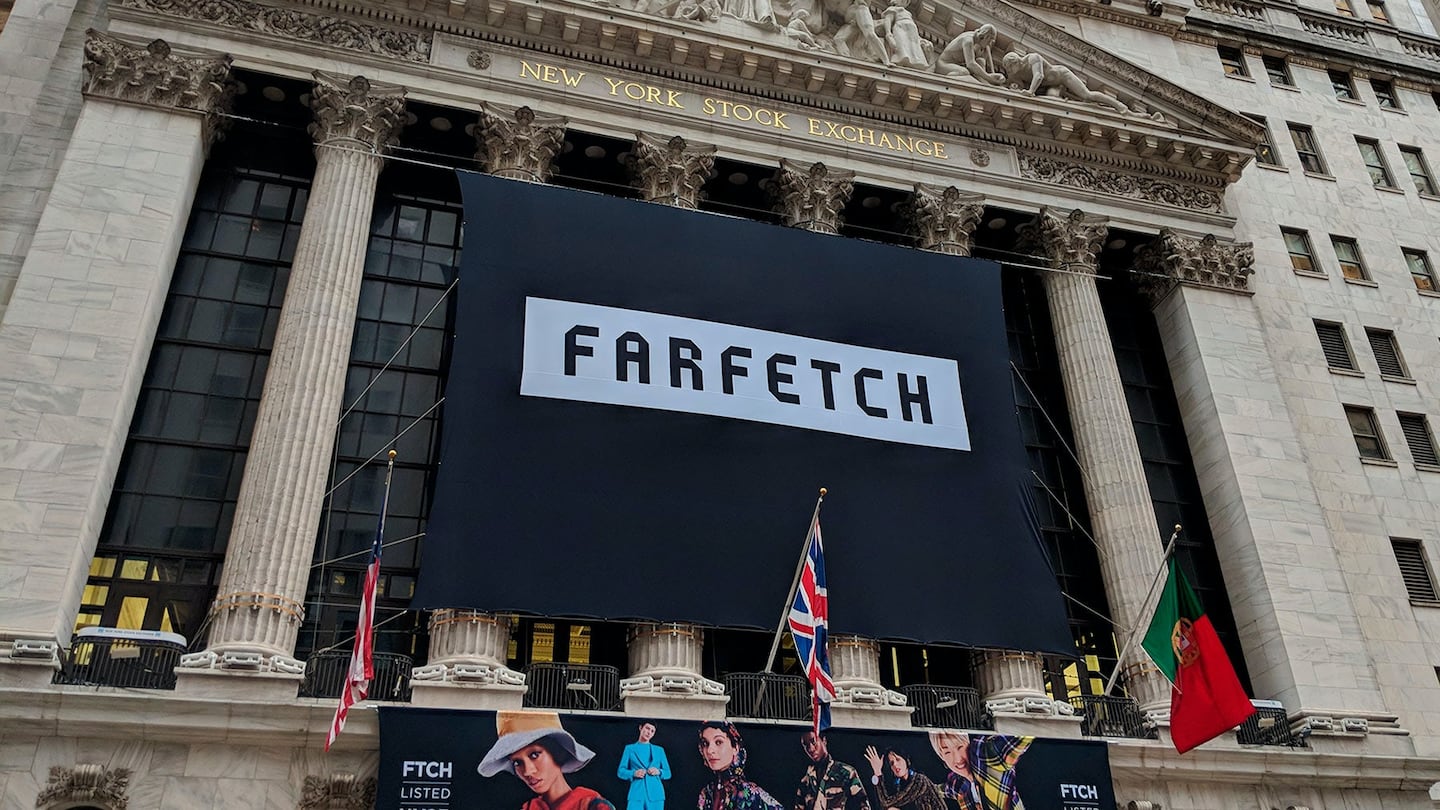NEW YORK, United States — Farfetch reported surging sales through its luxury online marketplace Thursday and upgraded its outlook for future growth, as more major brands and retailers sign on to sell through the site.
The company, which connects boutiques and brands to customers worldwide without holding inventory of its own, said the value of merchandise sold on the marketplace jumped 53 percent in the third quarter, to $310 million. Farfetch, which takes a cut of each sale, reported revenue of $132.2 million.
The results surpassed most analysts’ expectations for the company’s first earnings report since going public in September. Investors piled into Farfetch’s IPO, sending shares soaring above $30 in the days after its debut, a more than 50 percent gain on the initial offer price. Doubts have crept in since then, with investors worried about the impact of rising US interest rates and potential economic turbulence in China on both the technology sector and luxury spending. On Thursday, Farfetch shares closed at $22.05.
Many upscale brands and retailers have also seen shares plummet over worries about a possible slowdown in consumer spending in China, the fastest-growing major luxury market. Western brands could take a hit if customs officials follow through on a rumoured crackdown on daigou, or Chinese tourists who buy luxury goods abroad and sell them at home on the grey market. Farfetch has said much of its future growth will come from China and other emerging markets, and JD.com, one of the country’s biggest online retailers, is an investor.
In an interview, Farfetch chief executive
José Neves said those concerns were largely overblown.
"I think people got a little bit too cautious maybe," he said. "You're not seeing the gloom at all in these companies' results."
He added that Farfetch’s leading position in luxury e-commerce would insulate it from any turbulence in the wider retail sector, because customers will continue to shift their purchases from physical stores to online marketplaces even if their overall spending is pinched. And a daigou crackdown would be “very positive” for the company because it would force customers in China to buy through legitimate channels.
"The less daigou sales, the more sales for Farfetch and the brands," Neves said.
Founded in 2008, Farfetch has grown rapidly by providing a platform for boutiques and brands to sell to a global audience. Sales volumes will blow through $1 billion this year, closing in on luxury e-commerce leader Yoox Net-a-Porter, now owned by
Richemont. Farfetch takes a roughly 30 percent cut of sales on its platform, so its revenue still lags its main rival.
Analysts say Farfetch is well-positioned to grab a big share of the rapidly growing online market for luxury goods. Currently less than 10 percent of luxury sales occur online, but that figure is projected to grow to 25 percent by 2025, according to Bain &
Co.
The company has signed new brands — most recently Moschino,
Victoria Beckham and
Tory Burch, among others, and built up its streetwear offerings, adding Stadium Goods as part of a new in-site hub devoted to sneakers. Farfetch has also started selling jewellery, which Neves said has strong appeal with the site’s biggest spenders, and added its first department store merchant, Harvey Nichols.
On Thursday, the company reported 1.2 million active customers in the third quarter, up 42 percent. Average spending per order fell to $585, from $605 a year earlier, a dip the company attributed to a stronger dollar and a free-shipping promotion.
Farfetch isn’t any closer to profitability, reporting an adjusted earnings before income, taxes, depreciation and amortisation loss of $32.3 million. The company has ramped up spending on technology, hiring hundreds of engineers amid fierce competition from rivals like MatchesFashion and Net-a-Porter.
The company raised its outlook for fourth-quarter sales on its marketplace, to between $435 million and $445 million.
Persistent losses haven’t proven much of a deterrent to investors. And after raising nearly $900 million in its IPO, Farfetch has plenty of time to find a path to profits, analysts say.
Related Articles
[ What's Next for Farfetch After a Blockbuster IPO?Opens in new window ]
[ Farfetch Surpasses $8 Billion Valuation in Early Trading Opens in new window ]
[ Inside Farfetch's Store of the FutureOpens in new window ]


